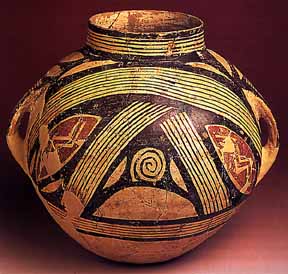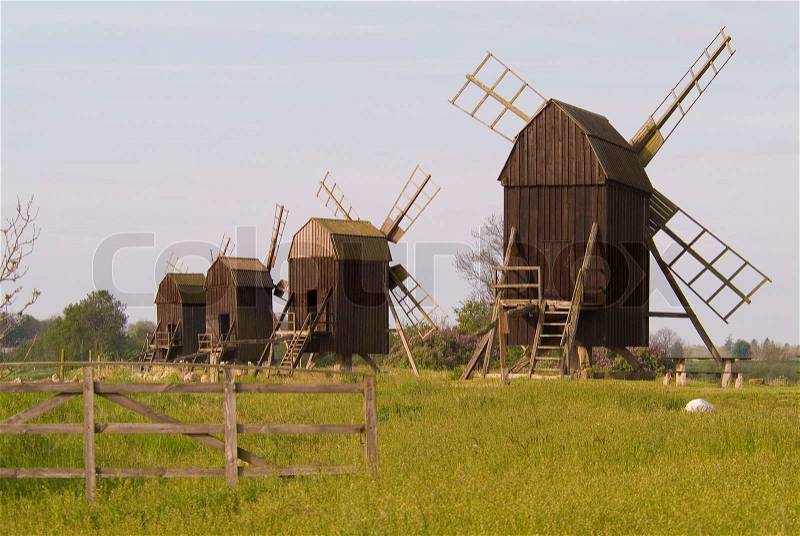The journey of technological innovation
Technology, the one word which has literally changed the lives of everyone. I always wondered what life could be in the absence of such a vitality. How the social animals made “technology?” How did the humans put such coordination and rhythm into the non-living bearings and springs?, “In simple, how technology happened to be the bleeding edge even today?”. It is surely the power of the human minds that they have been able to do such. I recently came across a research paper by George P. Landow, professor of art and history of Brown university. The paper gave a brief and precise picture of the different stages in which technology has developed itself. If we go through these stages, one can easily see that every single item that we have around us is not just a piece but an idea that has developed since the start of human civilisation and is still developing. From a simple hammer to giant satellites all are nothing but a thought that has matured and manifested itself since the start of our civilisation.
Now we move on to the different stages of technology emergence and try to find out the links of the tech world.
Anthrotechnic age(2.5million years ago – 2000BC):
The timeline begins with what ‘George P. Landow’ calls the ‘Anthrotechnic age’. I suppose it means ‘pre-tech period’ So what was the ‘anthrotechnic ‘ age all about? The history of human technology begins with the discovery of how to give the stone a cutting edge. The type of stone found most suitable for the purpose is flint. This was basically the period which started with the human civilisation 2.5millions of years ago. Also known as the stone age, this is the longest period in human history that has slowly decorated and eventually developed not only the various techniques to use different materials but also communicating them to others so that the knowledge can be preserved. The era holds in itself some of the gargantuan discoveries in the history of human existence. But in order to recall easily, this large period has been sub-cultured into three different phases. So what are these phases, let’s have a look.
The Paleolithic age(2.5million years ago-9000BC):
“Paleolithic”, emerging from the confluence of two independent words, ‘Paleos’ meaning ‘old’, and ‘lithos’ meaning ‘stone’. It means the ‘old stone age’. Now, this was the period during which any inventions that were procured changed the history forever. This age holds the pride of discovering some of those elephantine discoveries which are with us still in its raw form. These are Fire, art, hammer, etc.
The Mesolithic Age(9000BC-5500BC):
"Mesolithic”, born from the amalgamation of two free words, ‘meso’ meaning ‘middle’ and ‘lithos’…. Yes u got it…. ‘stone’. So this means the ‘middle’ stone age. Now, what happened in the middle stone age? Mesolithic material culture is characterized by greater innovation and diversity than is found in the Paleolithic. Some the new inventions during this period was the microlith which was a small stone tool mounted on a shaft to give a serrated edge.
The Neolithic Age(9000BC-2500BC):
“Neolithic”, comes from ‘neo’ meaning ‘new’ and ‘lithos’ meaning ‘stone’. This was the last part of the stone age. The stage where the most advanced inventions of that age came into existence. This age prevailed from around 9000BC, but the lack of advancement in Euopean technology, this age came a bit late for them. So, the Mesolithic age was pushed in ,lasting from 9000 to 5500 BC and pushing the European Neolithic forward to span the period 4000 to 2500 BC.. Now since this was the most advanced stages of that time what might had been its outputs? There were many though. Some of them are bricks which were made by baking moulded mud cakes in the scorching heat of the sun, spinning thread for weaving and loom.
By 4000 BC deep shafts are cut into the hillside at Rudna Glava, in the Balkans, to excavate copper ore. This robbing of the earth's treasures is carried out with due solemnity. Fine pots, bearing produce from the daylight world, are placed in the mines as a form of recompense to propitiate the spirits of the dark interior of the earth.
Anthrotechnic++ age(2500BC-1000AD):
‘++’ seems more like an energy gainer.. ryt? But this was the stage in human history when they gained something which not only increased their workforce but also taught them to increase their mechanical energy. Now how did they do that? It's quite simple actually, they learnt how to tame animals and make them work for us. Cows, bulls, bisons, buffaloes and elephants were used to increase their mechanical energy manifold. These animals were use for transport, wars, domestic works, etc. So, it can be said that Anthrotechnic++ age truly gave the boost of energy to the human civilisation.
The basic workers that the humans used at that time were animals, so a typical work unit was measured as 1 horsepower(hp) or ox power.
Eotechnic age(c.1660):
So, 3rd comes the Eotechnic Age… “Eo” meaning “a combining form of something early and primeval” and “technic” is obviously related to technology. So that means, this was the early period of the technology of the human civilisation. Some of the keen inventions of this period are such as:
The windmills: The first practical windmills are constructed on or before the 9th century in a region spanning eastern Iran and western Afghanistan.
A tower clock in China: After six years' work, a Buddhist monk by the name of Su Song completes a great tower in 1094, some thirty feet high, which is designed to reveal the movement of the stars and the hours of the day. Figures pop out of doors and strike bells to signify the hours.
Gutenberg and Western printing: The name of Gutenberg first appears, in connection with printing, in a law case in Strasbourg in 1439. He is being sued by two of his business partners. Witnesses, asked about Gutenberg's stock, describe a press and a supply of metal type.
It is quite clearly seen that the inventions in this period blended their technologies quite well. So that all about Eotechnic age. Next,
Paleotechnic age(1860):
Paleotechnic means “old technology”. This was the period that flourished under the mechanical power of the steam engine, captured under the magnificent eyes of a camera, people saved due to the introduction of the stethoscope. This period of innovation in technology made the structure of eyes, arms and immunity of the human civilisation. This was the base or platform formed in this period which would act as a base for many centuries to come.
Neotechnic age(1960):
This was technology in the modern era, it means the age of “new technology.” It can be said that the “neotechniques” era started the invention of “Electric street Car”, built by the Electric Carriage and Wagon Company of Philadelphia starting in 1896, and used on the streets of New York to deal with the "horse pollution" of the day, the “Telephone” by Alexander Graham Bell, which opened the doors to connectivity. The Neolithic age marked distinction in tech world dividing it into three broad categories as such “infotech”, “biotech” and “nanotech”. The present stage of technology has the promise to make something superior which has not been imagined. The total combination of these three technologies can produce a very highly elevating and equally devastating scenarios for mankind.








No comments:
Post a Comment